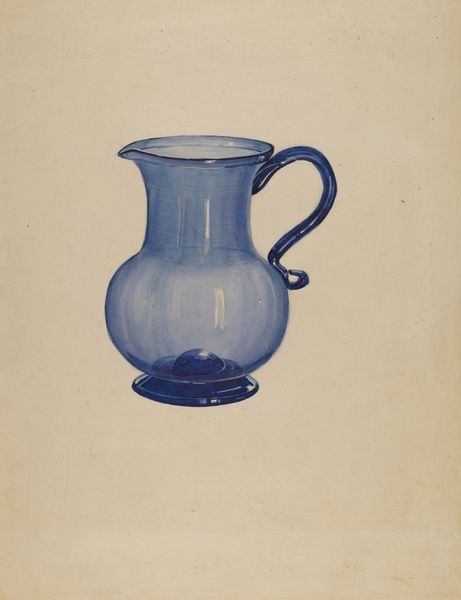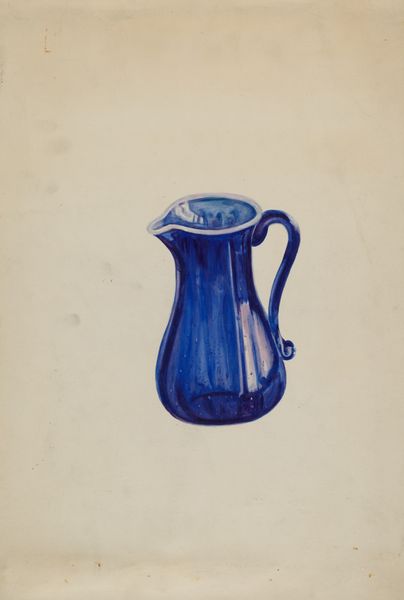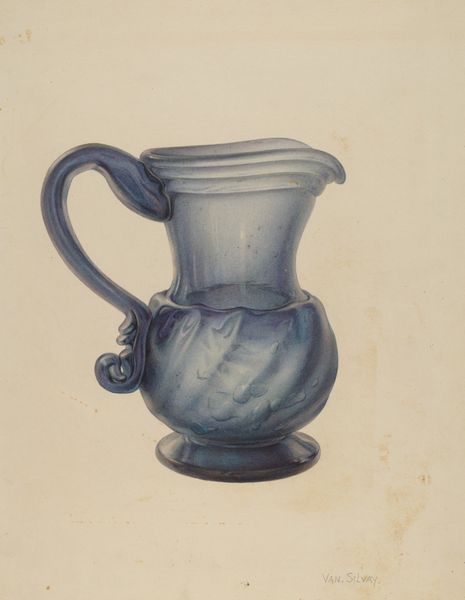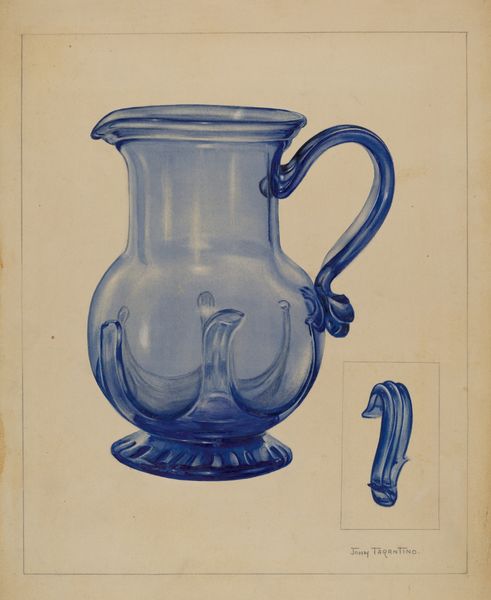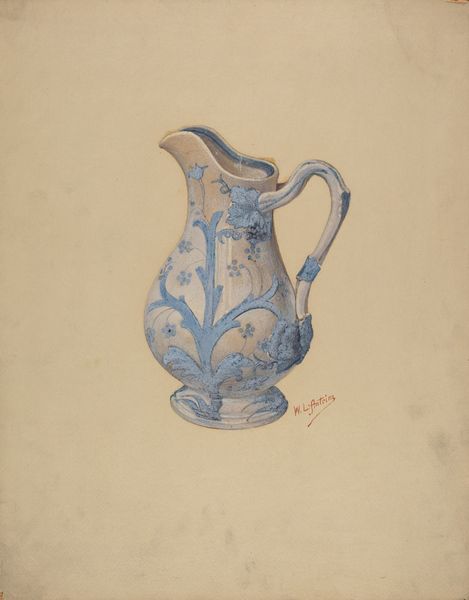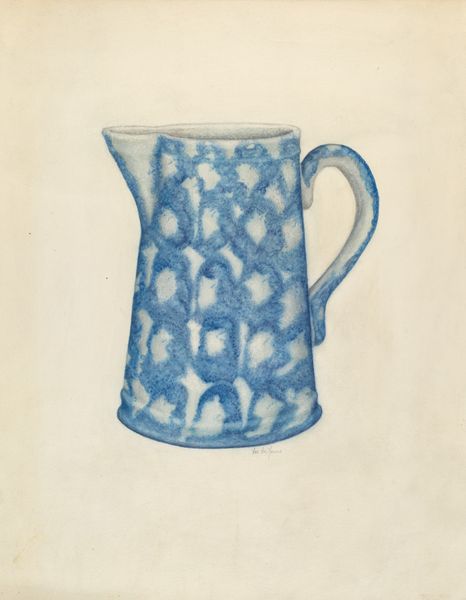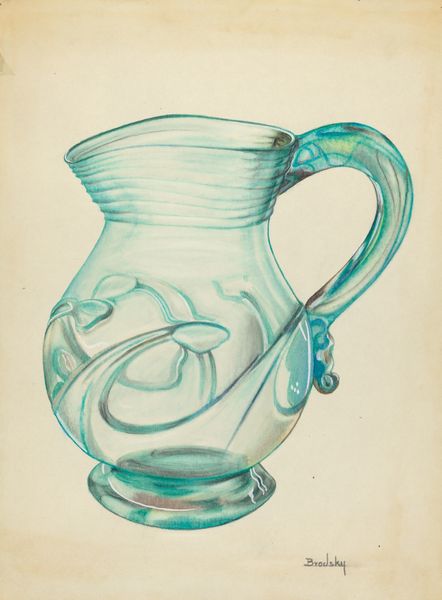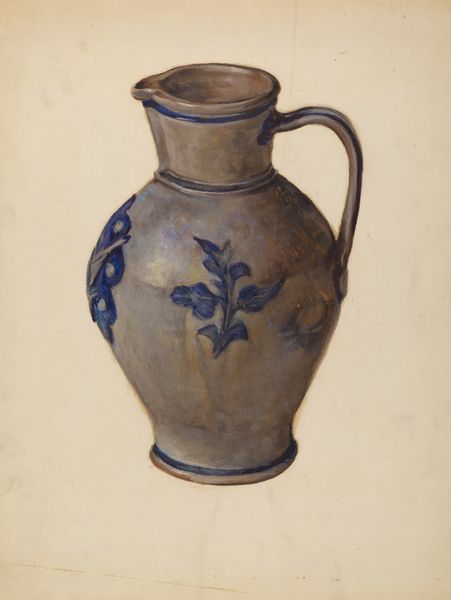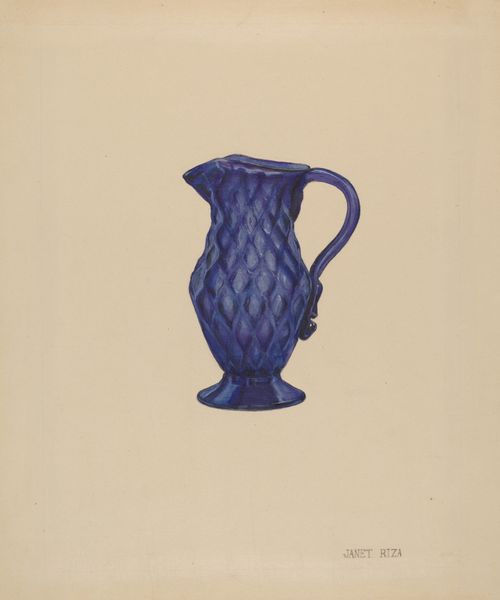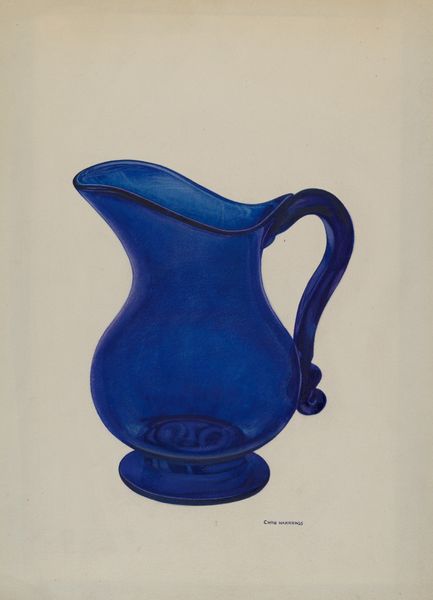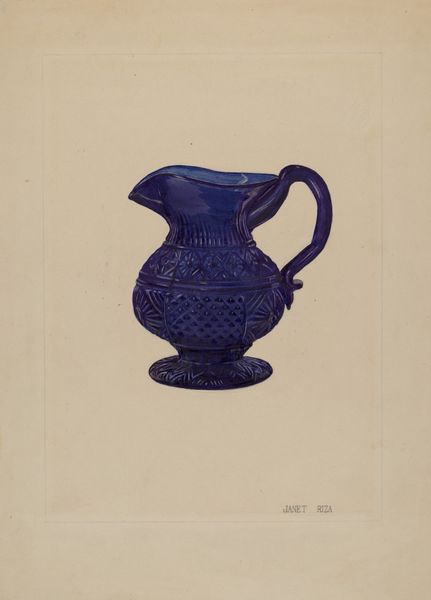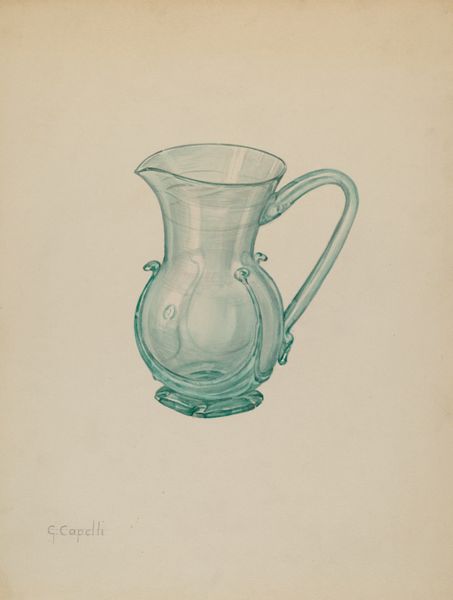
drawing, watercolor
#
drawing
#
figuration
#
watercolor
#
watercolor
#
realism
Dimensions: overall: 30.5 x 22.9 cm (12 x 9 in.)
Copyright: National Gallery of Art: CC0 1.0
Curator: I'd like to introduce Vincent Burzy’s "Pitcher," a watercolor and drawing created sometime between 1935 and 1942. What is your first impression of this, our single object of attention? Editor: I'm immediately drawn to the monochrome blue, a unifying colour scheme with a limited range, imbuing the picture with serenity. The artwork creates an ethereal and cool mood overall. The execution is detailed with close observation to form and lighting of a real-world pitcher. Curator: Indeed, and considering the socio-political context of the 1930s and early 40s—the Depression, the rise of Fascism, and, of course, World War II—this choice of representing a common object such as a simple pitcher as a vessel can perhaps suggest stability. Editor: That is interesting in the face of the storm and the turbulence you are depicting in Europe and North America, such choices have powerful messages through common symbolisms like a simple object. In many traditions, a pitcher also is representative of purity and cleanliness and often the act of pouring liquids can represent sharing and giving in difficult situations. Curator: That interpretation highlights a critical intersection of art, culture, and social commentary. Also, how would you consider such a specific style – this 'realism', within this environment? Can that combination provide a cultural purpose? Editor: The use of the symbol in a realist, meticulous, yet accessible rendering feels like it democratizes the experience of connecting with these deeper meanings. Making this symbolism available to all through easily-deciphered iconography feels deeply generous in a historical period that brought separation and war. Curator: That is such a brilliant approach and in our current turbulent historical period there may be an importance to going back to simple values represented through art, of social integration rather than fragmentation. Editor: This exploration really enriches my experience and offers a more grounded context for a deeper understanding of its function, making it an even more intriguing symbol.
Comments
No comments
Be the first to comment and join the conversation on the ultimate creative platform.
